The Industrial Revolution
The study of history emphasizes events that have changed the direction of human thinking, beliefs, or have been of such a tragic nature that they stand as center points of world and personal histories. Though they were major items of interest to the world, they crept into our homes and lives altering how we live. The gas crisis of the 70’s created the gas prices of today. The Vietnam war defined an era and changed how we view the national government. In the entertainment industry, they would be classified as showstoppers that captured the focus of the audience.
What has been lost in the concentration on these climactic and dramatic events are the slight and minor changes that have had the same dynamic effect with less recognition. A boy working in his garage in Marceline, Missouri who changed the course of the entertainment and amusement industries. Two college students tinkering with electronics in an attempt to create a memory device. An unheard of, insignificant scientist who changed the lives of millions of children. Each of these dedicated people labored away in obscurity until the impact of their labors altered the course of human existence.
As with the Renaissance and the Dark Ages, the industrial revolution falls into the category of world altering dynamics that slowly made its way into world notice but had such a huge effect that it continues to influence us today. As with Disney, Apple, and Dr. Salk, it began very quietly with men of vision who saw a problem, developed a solution, and made history.
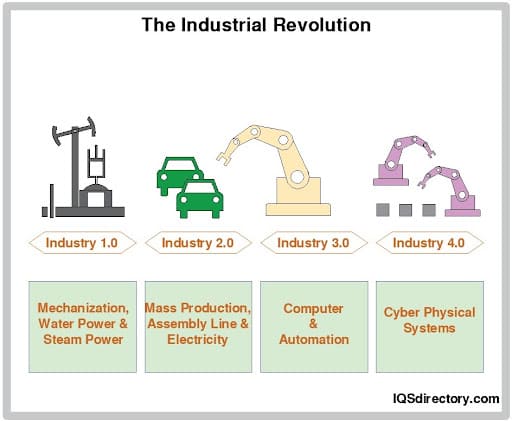
The Two Periods of the Industrial Revolution
Before beginning a discussion of the events that began the industrial revolution, it is important to understand the differing opinions regarding this world altering time of history. For many years, it was assumed that there was one industrial revolution that began in the middle of the 18th Century and continued into the early 20th Century. This view dominated history books for many years and seemed to sum up this era of dramatic advancements.
The term “e;Industrial Revolution”e; was popularized by an English historian and economist, Arnold Toynbee, who studied and wrote about it in the middle of the 19th Century. His perspective was limited by the era from which he observed its economical and societal changes. Since its initial introduction, the term has been broadened and expanded to include a larger portion of history.

In recent years, the more accepted belief is that there were two industrial revolutions. The first began in Great Britain in the middle of the 18th Century with developments in the textile industry and the use of coal. From there, it spread across the continent of Europe dramatically changing the socioeconomic, technological, and cultural landscape. It was a movement that could not be contained or controlled moving like a disease from country to country.
The diffusion of technological advances slowed in the middle of the 19th Century and is said to be the end of the first industrial revolution. When it looked as though the number of innovations was slowly diminishing came the second industrial revolution, which we are experiencing today. As with modern technical improvements, the second revolution was marked by the marriage between scientific discovery and technology.
The First Industrial Revolution – 1730 to 1850
The industry that transformed society and started the first industrial revolution was textiles. The British Empire depended on its colonies to supply goods such as textiles from India. At the time, the textile industry was concentrated in small family owned enterprises to produce cloth. With the development of innovations and technological advances such as Eli Whitney’s cotton gin, Great Britain was able to produce quality textiles in great quantities at a lower cost. The spinning jenny significantly increased production as well as using cotton as a replacement in the production process.
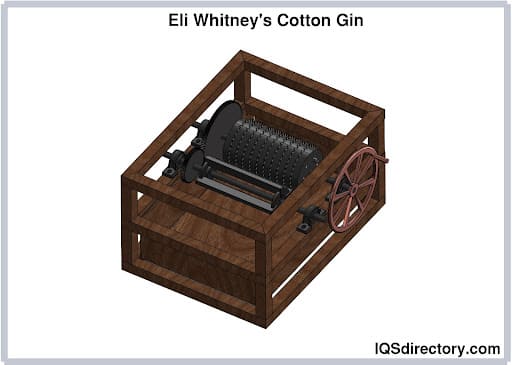
At the time, most of the world was agrarian. Food production was at the center of the economy, which was produced by small farms in small locales. As mechanization and modern fertilizers became available to farmers, food production became less reliant on labor and more dependent on machines. This reduced the need for workers. Since there was a lack of work and opportunities, farm workers moved into the growing cities to find work in the factories and large businesses. A dynamic societal shift took place as cities grew with the influx and farm production lost its significance.
As production increased and the amount of physical labor became less important, the new class of society, the middle class, that had begun during the Renaissance saw a huge spurt of growth. For the first time in history, extra income to spend on goods other than the necessities, was available. Leisure, formerly a pleasure of the aristocracy, was available to more members of society with money to finance it. A world that had been limited and restricted expanded, opening new opportunities and options.
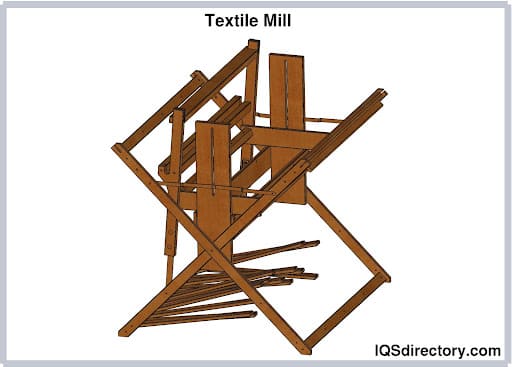
The most significant advancement was in health and hygiene. Scientists noticed the relationship between cleanliness and disease. A ground swell movement emphasized the need to keep things clean and antiseptic. This proved to be the revelation that changed the complexities of society. Stillbirths, infant deaths, and the mortality rate in general drastically declined. People were living longer and having better lives.
As has been true throughout history, a dividing line developed between the haves and the have nots. Factory workers worked six and a half days per week for ten or twelve hours a day making barely enough to survive. On the other hand, the middle class had the advantages of fine homes, conveniences, and wealth allowing them to live lives of luxury. This economic discrepancy led to the rise of labor unions and rebellion, which was most prominently seen in Russia.
Further subjugation was by powerful industrial nations that required natural resources to run their machines and empires. In search of new resources, European nations expanded their world influence by taking over and controlling what we call today third world countries that had the resources but not the infrastructure to make good use of them. At the time, it was said that the sun does not set on the British Empire. Great Britain depended on these lesser nations to supply them with the materials to keep their society running. With the loss of control of the American colonies, they increased their grip on the remaining colonies.
What developed from the first industrial revolution has very much become the blueprint for the advancement of technology. As innovative nations develop new and useful products, they depend on less fortunate nations to supply the raw materials and labor to produce those products. This can be seen in the movement that began in the 1970’s where large corporations have moved the production of their products offshore or contracted foreign companies to make a product with the corporation’s name on it.
The Second Industrial Revolutions – 1850 to the present
The first industrial revolution was spurred on by the invention of machines that took tasks that were formally done by hand labor and transformed them into mechanized functions that happened rapidly. Many of the changes centered on some type of equipment such as the steam engine, cotton gin, or weaving machines. Though mechanical advancements were prominent in the second industrial revolution, the unique feature of its innovations was the combination of scientific discoveries and implementing them using technological inventions.
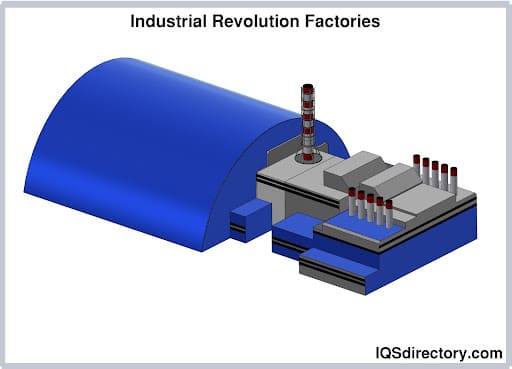
Some examples of this union between science and technology is the development of plastic, aluminum, and other synthetic resources. As these new materials came into existence, the machinery from the first industrial revolution was being perfected and improved. Automation took over more of the simple functions of production, which enhanced productivity and removed human interference. The assembly line, where simple functions were progressively added to a product, became the mainstay of the early part of the second industrial revolution.
As science improved techniques and methods of production, it also built upon the improvements in health care. Medicines and drugs designed to alleviate pain and suffering arose. Synthetic compounds were formulated to deal with many maladies that were lethal in the previous era. Madame Curie’s investigations into the treatment of disease using radium is the foundation of treatments used today to fight cancer. She was the beginning of two movements – scientific advancement in molecular science and the importance of women in intellectual development.
Another innovation that impacts us today is the development of the Bessemer and Siemen-Martin processes for the production of steel. Prior to their discovery, the manufacture of steel was a long and costly process requiring great risk and many man hours. With the implementation of their processes, steel production leaped forward, which lowered its cost and increased its use in a variety of common products.
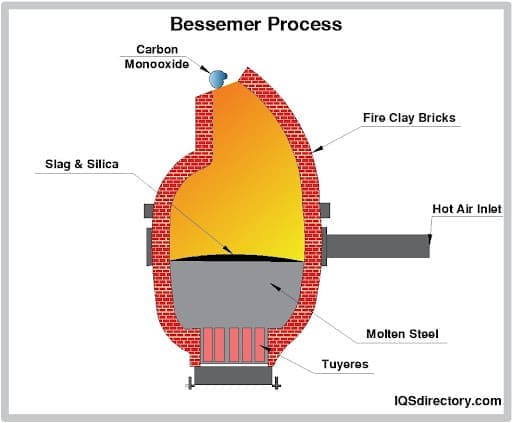
The development of improved methods for producing electricity and electrical wiring was an innovation that changed the everyday lives of society. Prior to Tesla’s discovery of alternating currents, electrical power could only be sent over short distances and was unreliable. With his discovery, electrical power could be easily sent across the world as a dependable source of power.
During the first industrial revolution, and with the invention of the steam engine, the world supply lines had changed making it possible to deliver raw materials and finished products in a timely fashion to distant locations. The second industrial revolution built on these advancements with the invention of the airplane by the Wright brothers, improvements in sea transportation, and advancements in railroading.
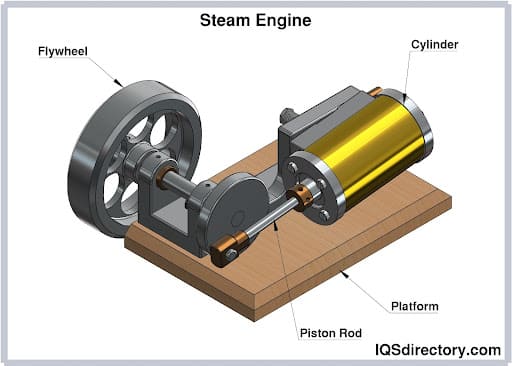
The world was well aware of oil for many centuries. In some ways, it was considered to be an inconvenience and a nuisance. Originally, it was refined in a crude process to produce petroleum that was used to light lamps and keep fires burning. During the second industrial revolution, it became a critical part of the invention of the internal combustion engine, which further enhanced the supply chain and added a new personalized element of transportation to society.
One of the most significant advances of the second industrial revolution was the growth of financial institutions. For much of history, people spent what they earned and were restricted by their income. This ideology made it impossible for the majority of people to own property, buy conveniences, or make improvements in their lives. During the second industrial revolution, the concepts of mortgages, financed loans, lending, and stock investments became the center of banking. Much of this grew from the supply chain where a company would borrow money from a financial institution to have raw materials shipped to production facilities. These large business investment ventures migrated down to the middle class where they were able to finance homes and other products. Today, we see it in the form of credit cards and other forms of debt repayment methods.
The second industrial revolution saw a shift in the thinking processes of common people. World locations and places that seemed to be out of reach and impossible to attain became a part of dreams and goals. This led to massive worldwide migrations across Europe and to the United States. Ideas that seemed beyond the imagination became a reality as families from around the world packed their bags and headed to new lands. Much of this was implemented by the new means of transportation, which gave freedom and hope to people struggling in their homeland.
There are historians who have placed an ending date on the second industrial revolution. That seems to be a bit premature. At the very beginning of the industrial revolution, innovations progressed rather slowly taking several years. Today, new and unique inventions happen monthly. One computer expert has said that the computer you purchase today is already out of date. Advancements are occurring so fast that it is impossible to keep track of them. This seems to be an indication that what started in the middle and latter part of the 19th Century is still happening today.
Causes of the Industrial Revolution
Feudalism
In the middle of the 18th Century, feudalism, in a limited form, still existed where underprivileged farmers were tied to the land for life. Though the system had existed for hundreds of years, it was very obvious that it could not continue forever. Even if Eli Whitney and the other inventors had not developed their society changing creations, it is very likely that feudalism would have ended. The serfs and tenant farmers were not likely to continue in servitude.
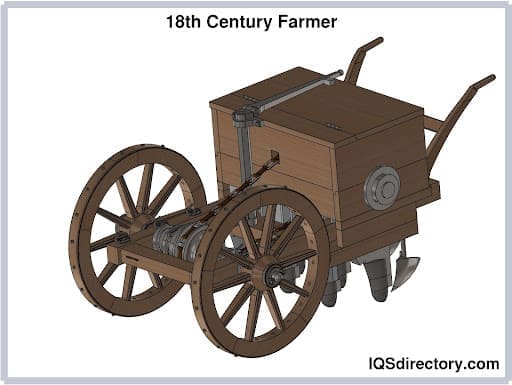
Elimination of disease
Advances in health care and the lengthening of human life made it necessary to have places for the population to expand. For many years, families had between seven and twelve children with the thought that most of them would die. Improvements in medicine and hygiene removed that factor.
Agricultural revolution
As modern farm equipment developed, the need for laborers and small farms disappeared opening new opportunities. The need for workers shifted from the fields to the factories and cities.
Availability of capital
With the growth of industry and the ability to invest in new enterprises, the middle class had extra money to do other things aside from purchasing food and finding a place to live. Unassigned capital made it possible for other industries to grow in the fields of comfort and leisure activities.
Scientific innovations
This one factor led to the demise of the old way of life. The leaps and advancements of scientists drastically changed the way people viewed the world. Scientific endeavors had an impact on every walk of life from industrial development to the care of infants and disease.
Colonial network
The concept of colonialism led to improvements in the supply chain and forced the advancement of new and innovative modes of transportation. The raw materials from colonial holdings were necessary for the growth of the new industries. Countries were forced to explore the world to find the materials needed to produce the products they had come to rely on. This required the development of a reliable supply chain to transport raw materials from the colonies to the home country.
Cultural shift
An ideology that grew from the industrial revolution was the concept that anyone could accomplish anything if they put their mind to it. The belief that hard work, taking risks, and looking for new ideas would lead to success and mark the importance of a person’s life. These ideas that were suppressed in previous eras but spread very quickly to every level of society and became motivators of change.
Key Technological Factors of the Industrial Revolutions
The industrial revolution led to the development of multiple factors that are impossible to list. The inventions and advancements had a greater impact far beyond the simple changes to production and productivity. The most evident are the societal changes for common people where they were moved from lives of obscurity to lives of possibilities and opportunities. Yet, the initiating factors took place in the factories and industries where new machines and inventions pushed the boundaries and forced change. In a simplification of this dynamic, we can boil it down to four main factors.
Textiles
The use of cotton to make cloth was a major leap forward as harvesting of it became more efficient with the development of Eli Whitney’s cotton gin. With the addition of steam power, looms and spinners were able to manufacture huge volumes of cloth that became affordable to large numbers of people. Small home industries that used to make cloth disappeared as the burden of production shifted to factories in the cities.
Steam power
Of all of the advancements, steam power probably had the greatest influence. It became the backbone of the machines that powered the looms of the textile factories, the ships that delivered the raw materials, and the trains that delivered the final product to remote locations. It was the essence of the supply chain and the most critical element of the industrial revolution.
Iron production
The production of iron was drastically enhanced with the replacement of coke for coal in the production process. It allowed for the development of larger furnaces, which increased production. With the inclusion of other innovations, the grade of iron produced was of a higher quality but at a lower cost. The iron industry saw a drastic rise in efficiency and speed. This translated to multiple effects on a society that relied on iron production.
Machined tools
This is one of those small steps that had a huge impact on industrial advancement. Many of the tools made prior to the industrial revolution were handcrafted and plied. The industrial revolution saw the development of the lathe, cylinder boring, machine milling, and the production of precision and precise tools. These inventions improved the quality of final products and removed wasted time and waste of raw materials.
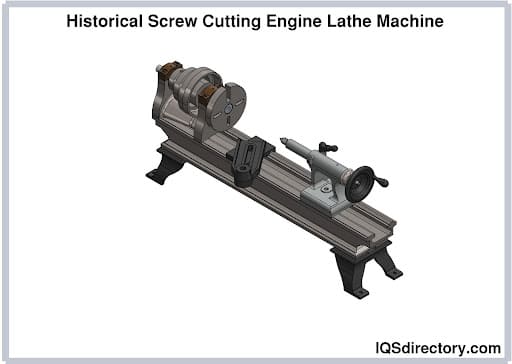
In the 21st Century, we take many of the startling advances of society for granted since they occur so frequently. Much of what we see today is built on the ideologies and beliefs of the pioneers of the industrial revolution, an age that changed the face of society.
 Castings & Forgings
Castings & Forgings
 Bulk Material Handling
Bulk Material Handling
 Electrical & Electronic Components
Electrical & Electronic Components
 Flow Instrumentation
Flow Instrumentation
 Hardware
Hardware
 Material Handling Equipment
Material Handling Equipment
 Metal Cutting Services
Metal Cutting Services
 Metal Forming Services
Metal Forming Services
 Metal Suppliers
Metal Suppliers
 Motion Control Products
Motion Control Products
 Plant & Facility Equipment
Plant & Facility Equipment
 Plant & Facility Supplies
Plant & Facility Supplies
 Plastic Molding Processes
Plastic Molding Processes
 Pumps & Valves
Pumps & Valves
 Recycling Equipment
Recycling Equipment
 Rubber Products & Services
Rubber Products & Services